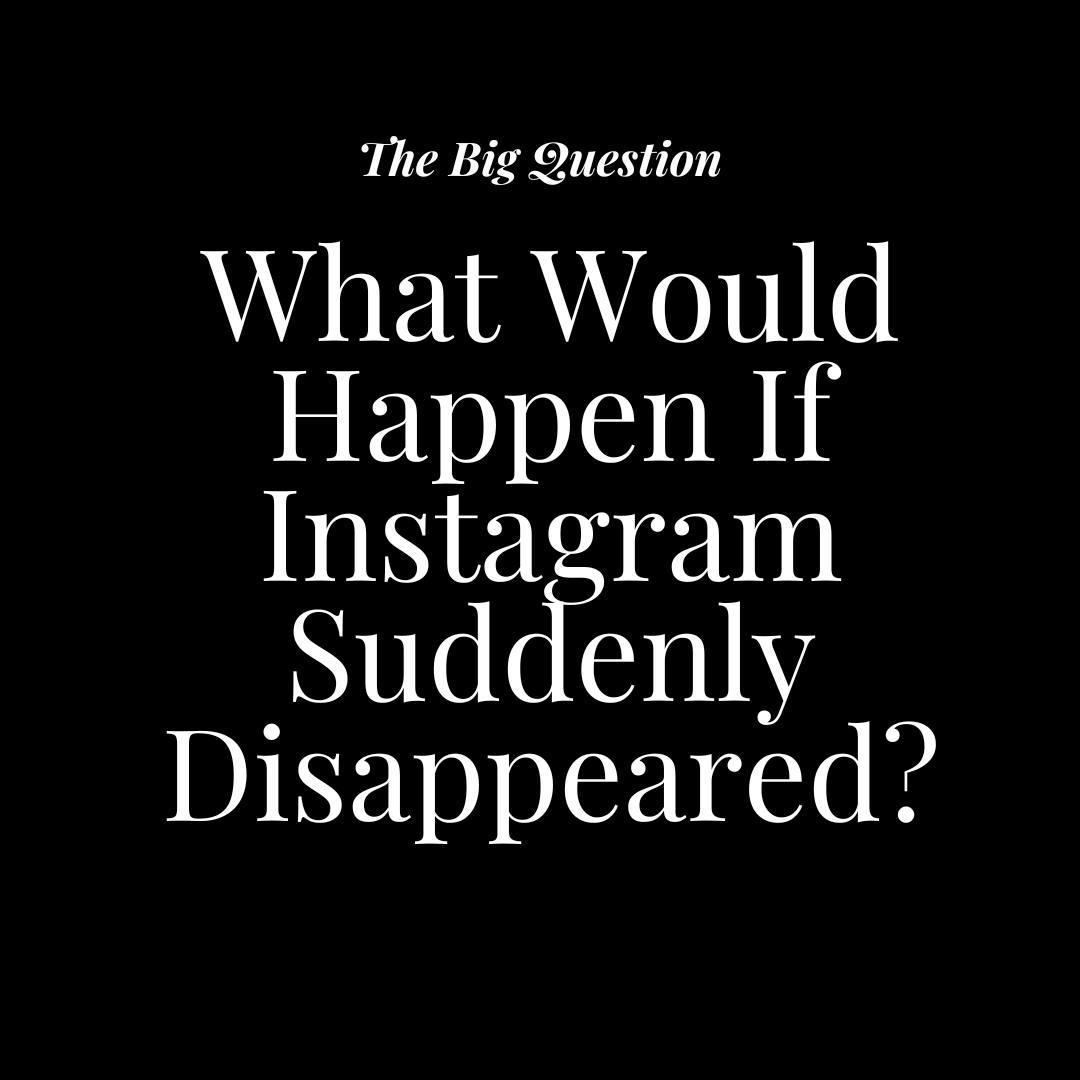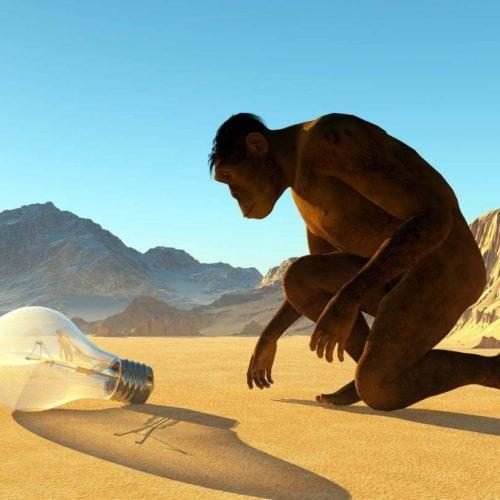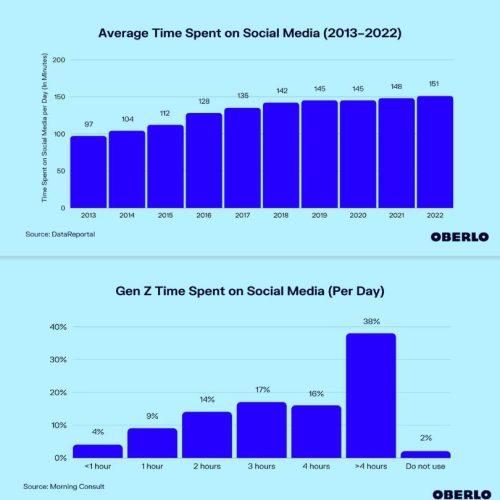It could be a Black Mirror episode…or it should be one.
- Culture & Travel
What Would Happen If Instagram Suddenly Disappeared From Our Lives?
- ByNandini Bhalla

The synopsis: what if we woke up tomorrow, and social media had *poof* vanished from our lives forever? Charlie Brooker, take note.
The average Internet user spends 2 hours and 29 minutes a day on social networks like Instagram, YouTube, and X. Gen Z almost doubles that number with 4.5 hours of their day spent on social media. As the sun rises, millions of users wake up to check their phones first thing in the morning, for updates on friends, family, and absolute strangers.
There really isn’t a diplomatic way to say it…we are all just little lab rats, addicted to that medical dropper filled with sugar syrup. Sure, our time could be better used for nobler pursuits, such as world peace or a neater cupboard, but when the heart wants a trending-audio Reel, it wants a trending-audio Reel.
And so, it begs to be asked and answered—what would humankind be without our notifications and Likes and Comments?
At first, we probably wouldn’t know what to do with ourselves and all those extra hours in a day. Instead of sending memes to stay in touch, we’d have to start answering the phone. Instead of GRWM videos for strangers, we’ll have to start getting ready for the humans around us. There’d be no Facebook to remind us of birthdays, and what’s the point even of a good meal or beautiful sunset if it can’t be shared with others?
It’s the dark digital ages.
But there’s more…

To begin with, our information sources will have to be replaced almost immediately. In one study, a whopping 90 percent of respondents said they get their daily news from social media, instead of traditional forms of media. In consequence, while we interpret alternatives, the death of social media may well prompt a rebirth of the newspaper and higher television TRPs.
And book sales—which have been declining over the years, will likely see a revival, post the evaporation of social media, as more of us turn to reading in the hours we have regained. Since reading has been proven to make us more intelligent and empathetic, as well as boost brain power, we would all likely emerge from our collective loss, more adroit.
Something else that won’t be as rampant as it is today, is our insecurities. Instead, we’d probably be happier and more confident without our feeds. Multiple research papers have linked social media usage to increased risks of depression and anxiety, along with lower self-esteem, and the nature of the game might be to blame here. Social media, you see, is designed in a way that breeds comparison and insecurity. Being subjected to someone’s (nay, several people’s) perfect body, perfect home, perfect job, perfect family, or perfect proposal—when you want the same but do not have them—can send even the most reasonable amongst us into the throes of inadequacy. But as catalysts reduce, so will our dissatisfaction.
Being subjected to someone’s perfect body, perfect home, perfect job, perfect family, or perfect proposal can send even the most reasonable amongst us into the throes of inadequacy.
This mirrors a larger shift in the vanity space. To the joy of sustainability crusaders, who have been begging us to consume less, without social media, we might finally, actually curb our unreasonable shopping habits. A culture of #OOTD and ‘new’ has intensified our desire to buy more, and in one study by environmental charity Hubbub, one in six people said that they can’t repeat an outfit again once it has been seen on social media. Which further means that fast-fashion brands who depend on social media users’ ‘disposable mentality’, will also see a slow-down in sales.

BUT LET’S GO BACK TO THE BIT ABOUT NEWS, SHALL WE?
The disappearance of social media will certainly alter our news and entertainment sources. But it’s worth noting that our political leanings, awareness, and beliefs will likely change, too. New Media has forever renovated the way we communicate and connect, giving us access to more information, more quickly than ever. Political candidates can now speak directly to their vote bank, and social media can help put pressure on our political parties and representatives to be answerable and accountable for their actions. But there is also a sinister undertone that marks the territory, in the forms of ‘fake news’ and ‘motivated’ platforms without editorial or institutional gatekeepers. According to a Pew Research Center survey, 84 percent of people surveyed across 19 countries believe social media has made people easier to manipulate with false information and rumours. And incidentally, according to a survey by Microsoft, India has more fake news than anywhere else in the world.
But is it truly reasonable to blame social media for spreading fake news, when the real ‘spreaders’ are humans? Yes and no. Social media acts as a competent instrument of amplification. And the underlying problem is speed, and how quickly falsehoods are spread. A recent study by MIT scholars found that false news escalates more rapidly on Twitter [now X] than real news does. False news stories are 70 percent more likely to be Retweeted than genuine stories are. And it also takes genuine stories about six times as long to reach 1,500 people as it does for false information. Why? Because false news is often met with greater emotions such as surprise or disgust, making people sit up and take notice. “If something sounds crazy-stupid, you wouldn’t think it would get that much traction,” says fact-checking journalist Alex Kasprak, in an interview on Science.com. “But those are the ones that go massively viral.”
And because we spend so much time on platforms, and because we lack sufficient laws, policies, and ethical standards against misinformation, the overload of hate speech and fake news and toxic political agendas can have devastating consequences, including communal violence, online bullying, and economic ruin. For instance, in 2018, former American President Donald Trump Tweeted that Amazon pays “little or no taxes to state & local governments”. His Tweet was widely circulated, which crashed the Amazon stock value to its worst monthly performance in two years. Except, Trump’s claims were factually incorrect, aka ‘fake news’. “False news can drive misallocation of resources during terror attacks and natural disasters, the misalignment of business investments, and misinformed elections,” warn the MIT scholars.

Paradoxically, social media has served as an exceptional ground for social activism. #BlackLivesMatter is just one example of how Instagram helped amplify conversations around human rights, prompting a global movement for justice. Social media has given us a voice—a voice to galvanise change, and a voice to bitterly argue with a stranger in the Comments section about the virtues of dogs versus cats. Both wouldn’t exist if social media did not.
Which brings us to how social media moulds our political and social views. Nearly all our feeds are ‘echo chambers’ and ‘filter bubbles’, which means the content-recommendation algorithm only shows us what we already believe in, basis our Likes, Shares, or what we have spent time looking at. So if I believe tomatoes are better than potatoes, my ‘algorithm curated’ feed will reinforce this belief through what shows up on my feed. In a vegetable war, that’s fine. In political scenario, this is dangerous because I will never see the potato’s point of view, even if it is the one that makes more sense. “A digital echo chamber is when everything on your feed reflects only your interests and views without exposing you to new or differing opinions,” explain the lovely folk at BBC. “This can make us feel that everyone thinks the same as us and only reinforces what we already think, and contributes to the spreading of fake news on social media.”
Our own limited beliefs, then, fuelled by a powerful social media algorithm that wants us to see what it thinks we want to see, reinforces our existing beliefs and limits our exposure to diverse viewpoints. The result? A distorted sense of reality.
What about the economics of a world without social media? The sudden disappearance of social media platforms will likely disrupt global economies and consumer brands, forcing them to reinvent advertising and content plans. As an increasing number of businesses find themselves dependent on social media platforms like YouTube and Instagram for direct sales as well as marketing of products, the hypothetical disappearance of social media platforms will require a reimagining of advertising methods and customer acquisition.
And yes, this includes a disruption in the careers of influencers.
A recent report by Animeta found that India has over 8 crore creators! And according to Kalaari Capital, the global content creation economy market is pegged at $104.2 billion. In 2020, the Indian YouTube creator ecosystem contributed almost ₹6,800 crore to the country’s economy. And YouTube India generated over 6.83 lakh jobs in the country, as per Oxford Economics. The influencer marketing industry is also expected to touch ₹2,295 crore by 2025 in India, which means the influencer economy is serious business.
Without social media, ‘real estate’ brands—especially new and smaller ones—will struggle more to reach audiences, as will companies that rely on Social commerce. And so will the millions of people who rely on some aspect of social media to earn an income (a report by Payoneer Freelancer Insights Report estimates that 68 percent freelancers in India depend on social media to find work).
And the influencer will have to find alternative tools of influence.
In the absence of social media, the term ‘viral’ will once again refer to submicroscopic infectious agents, and ‘engagement’ will mean there is a wedding in the offing. We’d probably become less distracted (and dangerous) drivers, and we will no longer have immediate updates on how a former lover’s life turned out.
Not that we should worry, because social media isn’t going anywhere. And it probably never will. And maybe that’s a good thing. Maybe.
But still, it’s a story line worth contemplating…even if only for the shelf life of whatever Reel trend is doing the rounds right now.

READ MORE
- Gauri Khan, On Her New Experience Centre In Delhi, Her Favourite Spot At Home, and Great Décor Advice
- With IRTH’s New Store in Noida, The Brands Adds To Its Joyful Delights
- Ranbir Kapoor’s New Perfume, ARKS Day, Reminds Him of His Childhood
- Your Interiors Will Love The Colour and Design Predictions By Asian Paints’ ColourNext Forecast for 2025
- “India is an Incredible Source of Inspiration for Me, and I Want to Connect With the Hearts of Indian Women”





